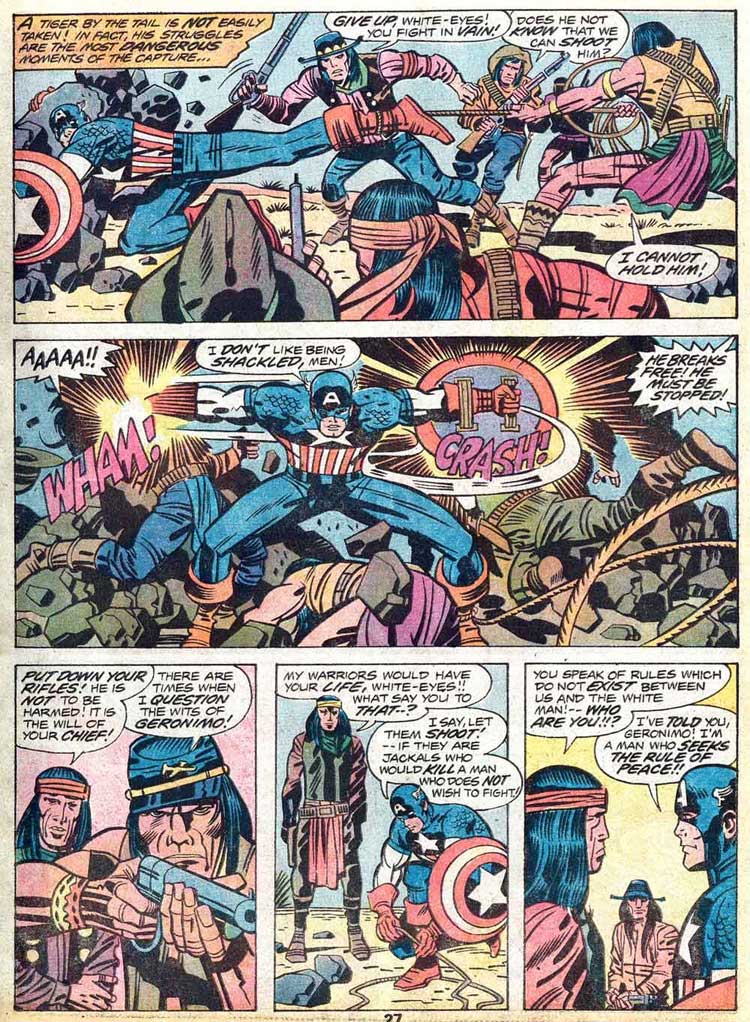Contemplator(Marvel Treasury Special: Captain America's Bicentennial Battles)--The Contemplator, calling himself Mister Buda, summoned Captain America to his domicile to teach him a lesson about America. He first sent Cap back in time to World War II where he was reunited with Bucky and fought Hitler, the Red Skull, and the Nazis before returning. Buda then placed a psychic-talisman that sent Cap on a number of jumps through time, from Colonial America and a meeting with Ben Franklin and Betsy Ross where his costume apparently inspired the American flag; to the Great Depression, where he fought gangsters harassing a newsboy; to the 18th century where he got caught in a struggle between the forces of Geronimo and some white settlers; to a collapsed coal mine where he helped the victims escape to the surface; to a World War I plane fight; before briefly returning to Buda again, who noted the value of viewing the bad times with the good; and then back to the 19th century where he outfought the legendary boxer John. L. Sullivan; then to where he helped a runaway slave escape those who sought to return him to his former owners; then to Alamagordo where he witnessed the first nuclear bomb test; then to 1871 on the night Chicago burned down; then to a modern era undersea research base; then back to Buda; then to the future for a battle on the moon; then to a Hollywood musical celebrating America's history; then back to Buda; before taking a final trip to the modern era where he enjoyed spending time with the future hopefuls of America's youth.Here's a lengthy analysis of the story, including the Geronimo sequence:
King Kirby, Captain America and American History
By Donald R. McClareyCap is shifted from Depression tenement-land to Geronimo’s New Mexico. The change in climate is subtle but important, and no other episode could have followed to such effect. Both Geronimo and his world are suffused with a grim but unmistakable dignity: the effect is of moving from a mean and dirty world to a dry but clean one. Geronimo is a man who knows his own mind and whose word can be trusted. Yet his dignity that of tragedy, the dignity of men bound to fight and die. The only way they can assert their worth as men is to stand up against the near-certainty of grief, lonely struggle and an early end. It’s rather startling to see the symbol of the U.S. living as it were by proxy the experience of a defeated Indian ridden down by the U.S. Cavalry: a particularly significant case of Kirby’s use of shifting and unusual narrative perspectives.You can read part of the story and see the Geronimo sequence here:
And Now, Bicentennial Kirby Captain America--Lost In Time!



No comments:
Post a Comment